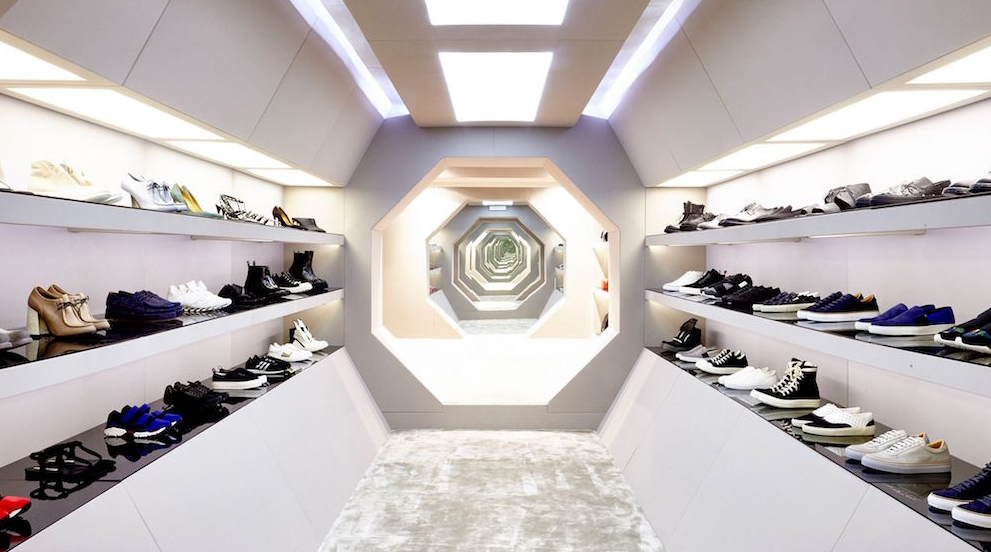Key Takeaways
- Discover how creative store design can enhance customer experience.
- Understand the role of innovative fixtures in modern retail.
- Explore sustainable design practices in the retail industry.
Table of Contents
- Introduction to Modern Store Design
- The Role of Fixtures in Retail Environments
- Creative Concepts for Retail Spaces
- The Impact of Sustainable Design
- Incorporating Technology into Retail Design
- Understanding Customer Behavior and Design
- Benefits of Innovative Retail Spaces
- Future Trends in Retail Design
In the fast-paced world of retail, standing out demands more than merely high-quality items; it requires an experience that captivates and engages consumers from the moment they enter a store. As the retail industry continues to evolve, the emphasis on creating experiential and immersive environments has never been greater. Retail design, therefore, becomes a strategic tool for communicating brand identity and enhancing customer satisfaction. One of the critical elements in achieving this is utilizing a well-thought-out design that meets both aesthetic needs and functionality. A custom display case can be pivotal in creating such environments, as they seamlessly blend into the store’s overall design while helping to organize products attractively, making every shopping trip a new adventure.
Introduction to Modern Store Design
Retail spaces today strive to be more than mere points of sale—they aspire to be immersive environments that draw customers in. Through thoughtful lighting, intuitive layouts, or multisensory experiences, the goal is to create a distinctive atmosphere that aligns with a store’s brand identity and customer expectations. As consumer habits shift toward valuing experiences over goods, stores must redefine their strategies, focusing on the holistic interaction a customer has within their premises. By evolving from traditional retail concepts to dynamic and engaging spaces, brands can create lasting impressions beyond mere transactions to build emotional connections with consumers.
The Role of Fixtures in Retail Environments
Fixtures are the backbone of any retail setup. They are not just functional elements; they shape the shopping experience by defining store layout and guiding customer flow. Counters, shelving units, and custom display cases contribute significantly to a store’s visual merchandising. They allow for the organization and display of products in a way that is accessible and appealing to shoppers, directly impacting sales and customer satisfaction. Moreover, the design of fixtures can reflect the brand ethos, whether through the choice of sustainable materials or innovative design that stands out. By offering versatility and adaptability, well-designed fixtures contribute to fostering surroundings that accommodate the varied and ever-changing needs of the modern consumer.
Creative Concepts for Retail Spaces
The modern retail landscape celebrates creativity and flexibility. Retailers are innovating with pop-up shops and modular layouts that allow for easy space transformation. These designs cater to the dynamic nature of the retail industry, ensuring that spaces can be swiftly adapted for different marketing campaigns or product launches. Pop-up shops, for example, enable brands to test new markets or products without the commitment of a permanent space. At the same time, modular layouts offer the adaptability to alter the store design based on seasonal changes or customer feedback. This flexible approach keeps the shopping experience fresh and allows retailers to respond rapidly to market trends and consumer preferences.
The Impact of Sustainable Design
Retailers are now incorporating eco-friendly materials and energy-efficient solutions into their store designs. These practices reduce ecological impact and resonate with consumers. Implementing sustainable design can range from utilizing recycled materials in fixtures to adopting energy-efficient lighting systems and digital solutions that minimize waste. Such initiatives reinforce a brand’s commitment to sustainability and position the retailer as a forward-thinking and socially responsible entity.
Incorporating Technology into Retail Design
Technology is reshaping how retailers connect with customers, making the shopping experience more interactive and engaging. Innovations like digital signage, smart mirrors, and augmented reality are examples of cutting-edge tools that enhance customer interaction within a store. Digital signage, for instance, can display real-time promotions and tailored content, while smart mirrors allow customers to virtually “try on” clothing or makeup. Augmented reality can enrich the shopping experience by overlaying digital information in the real world, providing a unique blend of virtual and physical shopping. These applications enhance customer engagement and offer valuable data insights into consumer behavior, aiding retailers in creating more personalized and effective strategies.
Understanding Customer Behavior and Design
Successful retail design hinges on a deep understanding of customer behavior. Retailers who grasp what influences purchasing decisions can craft shopping environments that encourage exploration and foster brand loyalty. From the strategic placement of high-demand items to creating inviting pathways through the store, insights into consumer behavior inform every aspect of retail design. Advanced analytics and AI-driven insights allow retailers to map customer journeys, optimize store layout, and convert browsing into buying.
Benefits of Innovative Retail Spaces
Innovative store designs offer many benefits, from enhancing customer experience to driving sales. By harmonizing form and function, these spaces emotionally engage consumers, creating lasting brand impressions and fostering customer loyalty. A thoughtfully designed retail environment can differentiate a brand in a crowded marketplace by offering unique experiences beyond traditional retail’s transactional nature. These spaces invite customers to explore and engage, often leading to increased spending and customer recommendations; integrating aesthetic appeal with practical functionality results in a more memorable and meaningful customer experience.
Future Trends in Retail Design
The retail design landscape is continually evolving. Emerging trends indicate a shift toward experiential shopping and the rise of virtual stores, which promise to revolutionize the industry. As consumers shift toward digital and hybrid experiences, retailers must adapt to new technologies and customer expectations. The future of retail design will likely include greater personalization, the integration of AI and machine learning for predictive insights, and more collaboration with tech to create seamless omnichannel experiences. As these trends develop, retailers will have opportunities to innovate further and enhance the shopping experience.

